Super Smash Bros. Ultimate Review: Everyone Is Here!
December 11, 2018
Mario, Link, Ryu, Sonic, Kirby, Solid Snake, Pac-Man, and Cloud Strife all fighting in an 8 player battle on a Bayonetta themed stage with GameCube controllers sounds like something straight out of a dream, but only an insane combination like this is possible in Nintendo’s all-star crossover series Super Smash Brothers. Super Smash Bros. Ultimate takes the series to the next level. Once again worlds collide in what is definitively the ultimate crossover in video game history- dare I say entertainment history. As series creator Masahiro Sakurai put it, “this is the best Smash for your buck.”

Everyone is Here!
Right off the bat, what makes Super Smash Bros. Ultimate more unique than any other entry in the series is that it sees the return of every single fighter who appeared in the franchise’s history. Everyone is indeed here, whether they are a reoccurring veteran such as Mario, Pikachu, and Link or a character that made an appearance only once like Pichu, Young Link, and Wolf. There is simply nothing negative to say about this roster. It is the largest cast of characters to ever appear in a fighting game. Just when I was blown away by the 58 character total of the previous entry in 2014, Ultimate kicks it up to 74- however, it can technically be considered 77 if we count the Pokemon Trainer as three individual characters and Piranha Plant who is a free early adopter purchase releasing in February.
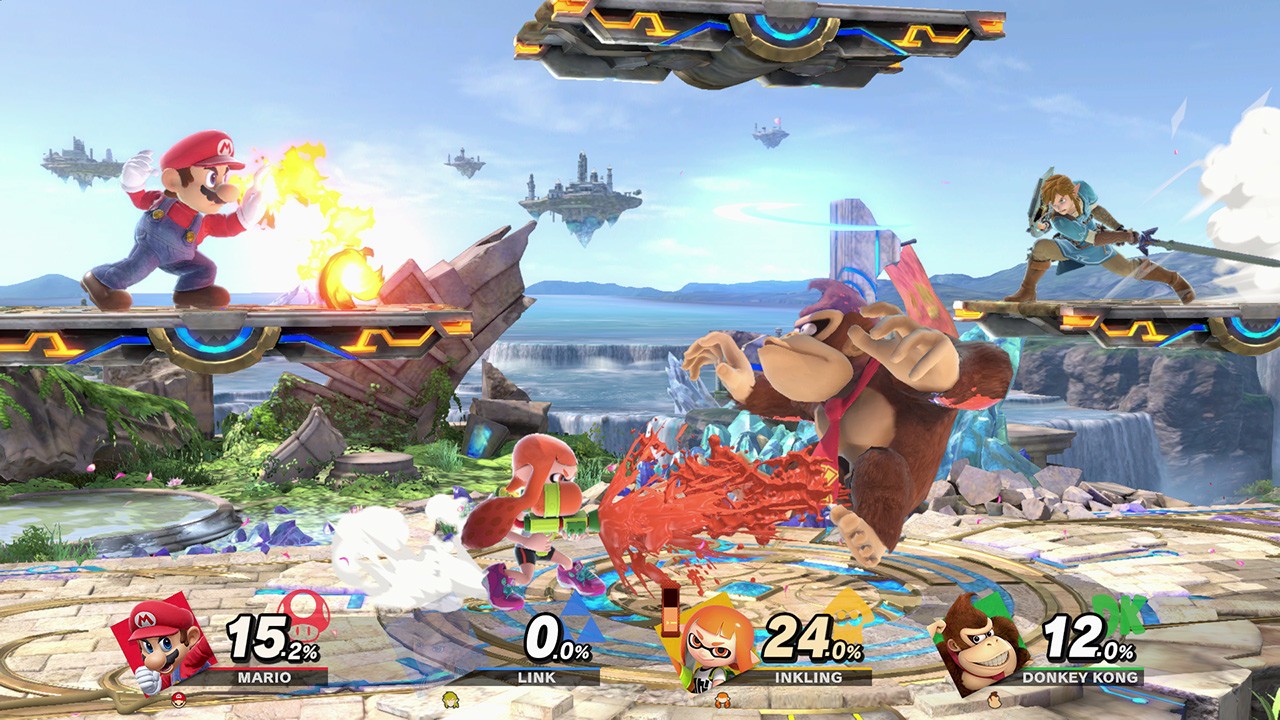
The eleven newcomers are all fantastic additions to the roster. Villains, Ridley from the Metroid series and King K. Rool from the Donkey Kong Country series, finally make their long-awaited debut adding more heavyweights and antagonist to the roster- something we have been in dire need of since Super Smash Bros. Melee. Meanwhile, modern recognizable characters Isabelle, Incineroar, and Inkling join the battle giving younger players their childhood icons. The cream of the crop, however, is the addition of the two vampire killers from Konami’s Castlevania series, Simon and Richter Belmont. Echo fighters- previously known as clone characters by the fans- add some originality to older fighter’s move-sets. Daisy, Chrom, Dark Samus, Ken, and previously mentioned Richter, are the brand new echo fighters. The roster is the most diverse it’s ever been. With the amount of different play-styles here balancing would seem like a major issue, but as to my knowledge there is no fighter that breaks the game. All fights are fair game this time around. Those who were in need of buffs and nerfs received them. There are a few characters I feel that personally could use some adjustments in a future patch based of off first impressions, but it’s still far to early in the games life to say what exactly the development team should change. Overall the odds of winning are going to always heavily depend on player skill. Use each fighter to your heart’s content. Master their moves in order to conquer your rivals and enemies. It’s the way Smash was always meant to be played.
The attention to detail in every fighter’s moves, taunts, alternate costumes, and victory animation is simply astonishing. Just like the entries that came before, the development team went all out with the details. I would love to sit here and describe all 76 fighters unique animations, fighting styles, and victory screens that make some of the most obscure callbacks to Nintendo history, but there is simply to much here. You will have to analyze these details yourself, but I think you will be amazed once you realize how much you are blindly missing. One of my favorite Easter eggs is that on the stage Palutena’s Temple, down taunt with Pit to hear the characters from Kid Icarus Uprising talk about your opponent in a one versus one matchup. This works for every single fighter in the game. Snake also has these on Shadow Moses Island- although these codec conversations are just ported over from Brawl so if you have seen them before then there’s nothing new to see. If you are a Nintendo fan- or just video game history in general- you are about to have an absolute overload. With the three decades of content represented here, there is a lot to see.
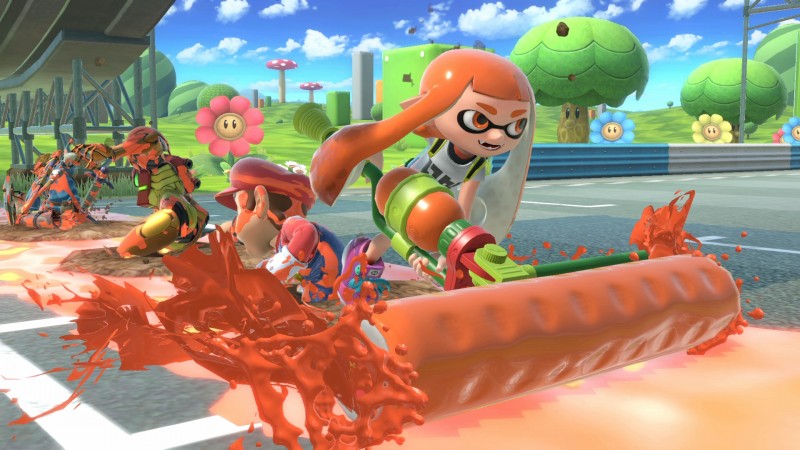 By the way, to unlock fighters, all you need to do is just keep playing the game. The three main game modes [Classic, World of Light, and Smash] will all allow you to unlock every fighter. You only start with the eight fighters that appeared in the original Nintendo 64 game so expect to see the “challenger approaching” splash screen pretty often. It is going to feel as if new challengers are constantly attacking you. Recruiting a new fighter gives you that same feeling of satisfaction that Smash Bros. has always resonated through you. If you ever lose against an opponent, rather than waiting an extensive amount of time for a rematch, sometimes in the ‘Games and More’ section, a door will show up in the bottom right corner. This is the ‘Challengers Approaching’ game mode that will allow you to fight anyone who you were previously defeated by. It only appears every now and then so be wise when choosing which fighter you are going to use for the rematch. The journey is long, but unlocking every fighter is a worthwhile reward.
By the way, to unlock fighters, all you need to do is just keep playing the game. The three main game modes [Classic, World of Light, and Smash] will all allow you to unlock every fighter. You only start with the eight fighters that appeared in the original Nintendo 64 game so expect to see the “challenger approaching” splash screen pretty often. It is going to feel as if new challengers are constantly attacking you. Recruiting a new fighter gives you that same feeling of satisfaction that Smash Bros. has always resonated through you. If you ever lose against an opponent, rather than waiting an extensive amount of time for a rematch, sometimes in the ‘Games and More’ section, a door will show up in the bottom right corner. This is the ‘Challengers Approaching’ game mode that will allow you to fight anyone who you were previously defeated by. It only appears every now and then so be wise when choosing which fighter you are going to use for the rematch. The journey is long, but unlocking every fighter is a worthwhile reward.
Mechanically Better
Every Smash Bros. game always introduces new mechanics, but Ultimate goes a step beyond. In my opinion, this is the best game in the series for both competitive and casual audiences. Smash Bros. has always been a game that is easy to pick up and learn, but it is extremely difficult to master. While the learning curve can be steep at times, it is without a doubt the easiest fighting game to learn. The additions of several new and reintroduced mechanics such as the short hop and directional air dodge are making the series more competitive then it has been in recent years. These mechanics are easy for beginners to learn, yet they add a whole new dimension to the playing field for those looking to play for glory. It is easy to play Smash, but it is extremely difficult to master it.
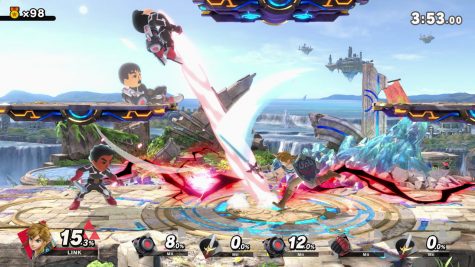
Gameplay is faster and flashier than ever before. The overall speed of the game has been completely adjusted and both damage and knockback will increase the fewer players there are in a match, in order to keep the action both grounded and well paced. Matches will go by a lot quicker than before- a much-needed change considering sometimes in the Wii U and 3DS versions, a single match could go on for way longer than intended. This is a handheld and home console game after all so the matches should be fast-paced for those looking for quick fire on the go action. Some smaller additions such as the zoom-ins during the finishing blow and during sudden death, make matches far more exciting to watch. It’s always satisfying when you land that Falcon Punch, but now hearing the blast and seeing it up-close in its magnificent form makes the finishing kill more rewarding than before.
Graphics have also been drastically improved once again thanks to the new lighting engine being used. Every character thematically fits the game too- specifically, I’m talking about the complaints many people had about the human representatives of a series looking out of place. The more realistic characters perfectly contrast the more cartoony looking ones in this art-style. An idea like Pikachu versus Snake may initially throw you off in your head, but it looks perfectly normal in actuality. Maps that debuted after the original Nintendo 64 game have also been remastered from the ground up- the N64 maps have not been enhanced in order to keep their classic look. Every stage is more bright and colorful then they have ever been and the added details make maps even more accurate to their source material. Check out this comparison of Kongo Jungle from Super Smash Bros. Melee!

One of the accessibility changes that shows how much the developers are listening to the fans starts the second you boot up the game; the main menu is much more organized than before. In previous Smash games, I could never find what I was looking for due to either too much on screen or odd placements that had specific modes crammed into the deep crevasses of the menu. The menus in Brawl and Wii U were an absolute mess. There were times where I actually had to do a Google Search just to find certain options in the menus of those games. I’m happy to report that the extra meat has all been cut off finally. The menus are simplified, descriptive, and clean. Navigating it is the easiest it has ever been since Super Smash Bros. Melee on the Gamecube!
Also for those of you constantly on the move, if you are worried that handheld mode is a weaker experience then docked mode, you have nothing to fear. The experience is nearly identical; the main difference being that when docked the game runs at a crisp 1080p versus the native 720p of handheld mode. The game runs at a rock solid 60 frames per second no matter which mode you are playing in. The handheld mode can even run eight-player smash if you really wanted it to- with not single hiccup in performance! It’s an incredible sight to behold and shows how well Nintendo knows how to design games on their hardware. You are bound to see it yourself if you decide to play through the adventure mode and trust me, when you do you will be in complete awe.
Smash!
This is it- the mode everyone is here for. Whether it is a one versus one, two versus two, free for all, or even an eight-player smash battle, Smash Bros. will always be as fun as it ever was. The action is chaotic and intense with hundreds of different variables that can instantly turn the tide of a match. It does not matter whether you play items off, final destination only, or pick your own rules, Smash is Smash. This formula of gameplay should never change. It never needs to be changed because it is always going to be a blast to play.
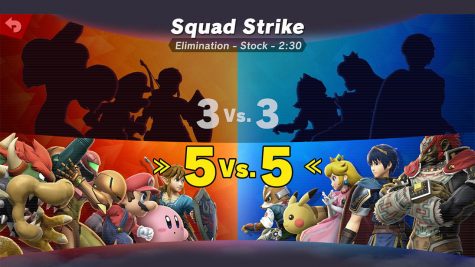
Some new added modes and features can spice up the traditional smash formula if your looking for a few new ways to play, and they completely live up to the hype. ‘Squad Strike’ was a mode implemented by modders into Super Smash Bros. Brawl and it’s following has spiked over the years due to games such as Marvel VS Capcom 3. Squad Strike has finally found its way into the official base copy of the game after years of fan demand. The concept of Squad Strike is a three versus three or five versus five match that consist of every stock being a different fighter you selected. It is everything you want it to be. You can choose who you want to play as and the order you want to use them in on any stage with the majority of the regular smash options still available. My only complaint about this mode is that it can only be played in one on one matches. While future content updates could add the ability to play with four players, it is a shame that this mode is limited to only two players currently. That being said, if you plan on playing with a group of friends, I recommend you create teams and swap controllers every time a player on said team is defeated. This is a really fun way I personally found to play Squad Strike.
The final smash meter is a chargeable final smash that will build up as you constantly damage your opponent. Once the meter reaches its maximum capacity, you can let out a weaker version of your character’s final smash. Only one final smash can be used at a time so players will have to wisely choose when to let out their largest attack. While I do not see someone like myself using this feature, it can be a pretty enjoyable way for a more casual audience to play. I would rather fight to the death with friends for the traditional smash ball item, but I can see why players would be enjoy this feature as it replicated a more standard fighting game like Street Fighter and Mortal Kombat. Give it a shot and see if you enjoy it!
One last addition I would like to go over is stage morph; the ability to instantly switch between stages mid-match. This is a feature I never knew I wanted until I saw it in action. Seeing the snowy ice tops of Summit transform into the big city of Fourside in mere seconds during a match is pure Nintendo magic. It’s a great way to change the atmosphere of a game that may go on for an extensive amount of time. Best of all, it causes no issues while your engaged in an intense set-up so do not worry about some major interference occurring because of this.
[wpdevart_youtube]WShCN-AYHqA[/wpdevart_youtube]
World of Light – The Adventure Mode
World of Light starts off with a bang- Literally. A mythical light force named Galeem who controls a barrage of Master Hands wipes out the entire universe and transforms every living soul into spirits. It’s up to the lone survivor Kirby to restore every soul to their bodies while recruiting fighters to stop Galeem; in other words, it’s another Friday again for the super tuff pink puff. While it does focus on fun rather than an actual story with cutscenes unlike its predecessor, there is a deeper lore to World of Light for those looking for it and a major twist during your journey that might throw you off. Without spoilers, the adventure mode is far larger than what it may initially seem.
I had a lot of fun with the adventure mode during my first ten or so hours, but after a while, things felt like they were dragging on. Super Smash Bros. Brawl had an adventure mode that took you around five to ten hours to complete. Here we are looking at a story mode of upwards to forty hours- if you really want to go for the full one hundred percent ending. This mode is way longer than it probably should be. It is awesome to see battles that are thematically centered around different Nintendo characters, but it can get repetitive once your spirits are fully powered up and your skill tree is maxed out. Towards the end of my adventure, I was blasting through enemies non-stop with about zero challenge. That’s not to say World of Light is easy or inconsistent though; there are some extremely challenging levels here, some boss battles will take you multiple attempts, and spirit battles can be drastically different causing you to rethink your play-styles and equipment placements. Each spirit contains different abilities, but there is quite a large handful that are the same which is where the repetitiveness of World of Light can come in at times. Going for that full percentage completion is difficult- difficult as in your going to be doing a lot of practicing with your mains to beat this mode. World of Light can be an absolute grind at times, more so towards the twenty hour mark due to difficulty. There are 1270 spirits to collect with some hidden unlockables and extra free downloadable ones coming soon- the first being Eevee and Pikachu from the cover art of the Pokemon: Let’s Go games- so good luck to all of you completionist since your odyssey will certainly be longer then the majority of players!
As I said, the spirit battles themselves are thematically appropriate towards their source material. It’s fun to see your favorite heroes, villains, and even cronies, in some form in the game- albeit very limited- but the amount of them to fight here is just excessive. The thematic dungeons in the adventure mode are definitely a high point worth mentioning- sometimes they are more exciting than seeing your favorite characters. Every dungeon has a different theme that replicates areas and sometimes overworld maps of classic games such as Donkey Kong Country’s first world, Monster Hunter’s plains where you encounter the species of Rathalos, and the original map of Dracula’s castle from the first Castlevania game. They even went as far as to bring back and create new renditions of the overworld themes. There neat little throwbacks, but the majority are sadly not very long. I really wish there had been more of these in the game rather than a larger overworld map.
My recommendation is to play the adventure mode in bite-sized amounts so that way things do not get stale. World of Light is a grind, but the end reward is worth it. Every major Smash Bros. fan needs to play this ending. You will be kicking yourself if you do not get to experience it yourself, or even worse if you just spoil it for yourself.
Games and More
The straightforward quickfire match mode from the first Super Smash Bros. game has been a long time series staple. It wouldn’t be Super Smash Bros. without Classic Mode!
Classic mode is the same as before; fight on with your favorite fighters until you reach the boss battle. With a roster of over seventy fighters, there was bound to be a ton of diversity here. Every character has a specific theme that pays homage to the games they appeared in or focuses on a specific category of fighters. For example, when playing as Snake you will have to face off against metal enhanced fighters and characters that have similar moves to the bosses that appeared in the original Metal Gear Solid games. Mario, on the other hand, will see you travel across the Mushroom Kingdom, fighting both allies and enemies. Richter however will see you facing off against every echo fighter in the game. Every character is drastically unique from the next. I advise you to pick the characters you enjoy playing as most. Some characters also have unique mini-bosses that are exclusive to their stories, such as Dark Link and Metal Mario for both Link and Bowser retrospectively.
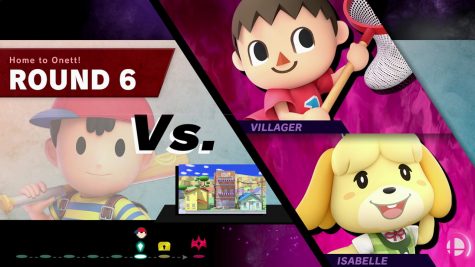
The one extremely disappointing factor to classic mode is the mini-games. Break the targets and home-run contest are absent, a first in Smash Brothers history. These small breaks from all the main action have no replacements. ‘Race to the Finish’ is indeed still present, however, after playing through it after three or four times, I found myself rather bored of it. Rather than having different passages and relying on player skill, this version of ‘Race to the Finish’ sees you destroying obstacles in your path to get to a cannon that will blast you straight to the final boss. Simply put, it is not as thrilling as it once was and worst of all it can become quite tedious to play. The last thing you want is to be going through over seventy different classic mode rounds and having to play this mini-game every single time. Speaking of boss battles though…
It would be a disservice not to mention the boss battles in Ultimate. These are by far the greatest boss battles to ever be implemented into a Smash Bros. game. Yes, there are not many, but what is here is just phenomenal. Besides the new original two characters from the adventure mode, all of these bosses are nostalgic throwbacks. Master Hand and Crazy Hand are back alongside Giga Bowser and Galleom, along with a few new surprises that I won’t spoil here- trust me they are not worth spoiling! These crazy throwbacks replicate the original battles from the games they came from. My personal favorite boss battle is by far Dracula. Just like the original Castlevania on the NES, Dracula is a two-stage boss battle. You will have to make precise headshots in order to take down the count, but just when you think it is finally over, outburst his demon form exactly as you remember it.
My one problem with the boss battles, however, is that I don’t believe they are randomized. As far as I can tell, each character has a specific boss that you will fight. This slightly kills the replay value of classic mode, but with the number of characters here and the vast difficulty scale, there is still a lot to do.
Outside of classic mode, the multiple ‘Mob Smash’ game modes such as century and all-star smash are back. Amiibo and Mii Fighter customization are also available here in this section for those wanting to use the extra features. There is not much else say about this section of the menu, but one other thing I should give a shoutout to is the return of ‘Training.’ Training has been vastly improved. There are now dozens more of accessibility options that I’m sure competitive players will take full advantage of and the option to use a grid stage is extremely helpful for those looking to see how much damage and knockback particular moves can pull off.
Controllers Galore
Every entry in this series always sees a wide variety of controller options and Ultimate is no exception. While you can play with one or two joy-cons, the pro-controller, GameCube, and just about any USB controller that is compatible with the Switch are all viable options here. While die-hard fans will most likely be using their older GameCube controllers, Nintendo’s newest options work just as well as what was previously established. During my time playing, I made sure to use a variety of the different options available. While my 2005 GameCube controller will always be a personal go-to choice, I found that the pro-controller was a very comfortable alternative to my normal option. Every controller works great here. The only person who may be at a disadvantage is those who are using a single joy-con as this option lacks a second analog stick; used to pull off quick and charged smash attacks. Competitive players will never have to worry about this as the majority of them never use the second analog stick, but for any party goers and casual players, you might be at a slight disadvantage at times.
The Longest Soundtrack Ever… Literally!
Thirty hours of music, it is never going to get better than this folks. Ultimate now holds the record for the longest soundtrack in entertainment history and it is well worth the listen! Do yourselves a favor and look up some of the song selections available, or if you own the game head over to ‘Vault” and just listen to the entire list right there. The reimagining of all of these tracks is spectacular. Here’s a comparison of one of my favorite tracks, Gangplank Galleon, from the original Donkey Kong Country and the new rendition from Ultimate below.
[wpdevart_youtube]XziA0L2zmBg[/wpdevart_youtube]
[wpdevart_youtube]zO5l63g4ijc[/wpdevart_youtube]
Verdict – The Ultimate Choice
Roughly 30 hours of music, an adventure mode spanning upwards of over 40 hours, 74 fighters in the base game, almost 1300 spirits, and 103 stages with over 300 variations all culminates into what is by far my favorite entry in the Super Smash Bros. series. Super Smash Bros. Ultimate truly deserves the tagline “ultimate.” Ultimate is by definition the definitive version and this is without a doubt the one. Masahiro Sakurai has once again outdone himself by setting the highest bar possible for both fighting and multiplayer competitive party styled games. This is indeed the greatest Smash for your buck. Not only is everyone here, everything you want is here. If you are looking to have a good time with friends, Smash Brothers will always be the ultimate choice. This belongs right on your shelf- or digital library- next to The Legend of Zelda: Breath Of The Wild and Super Mario Odyssey. Smash Brothers is once again the game that every Nintendo owner needs to have in their collection. This is indeed the brawl to end them all… for now until the next entry releases years down the line.
DLC
Just a heads up: the game will be receiving a good chunk of downloadable content. While its unknown who exactly all these DLC characters are, there is a total of five- one just recently being revealed [Joker from Persona 5] at The Game Awards. Each fighter will come with a stage and a selection of music tracks. The fighter pass can be purchased for $24.99, but fighters can also be purchased individually when they release. If you plan on playing this game for years to come, then the pass will definitely be worth the extra money. Also be sure to grab yourself the free character Piranha Plant by registering your copy of the game through My Nintendo by January 31st!
For more information, you can visit https://www.smashbros.com/en_US/






















































Mrs. Lanza • Dec 11, 2018 at 6:49 pm
Wow- what a detailed article. Who knew there was all of this info to consider? I’ll share it with my son, who will want to know. Nice job!